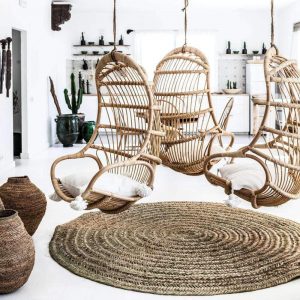A well-designed and inviting office space can significantly enhance productivity, creativity, and employee morale. If your office is in need of a refresh, refurbishing can breathe new life into the environment. In this blog post, we will explore several creative ways to refurbish your office and create an inspiring and functional workspace.
- Rethink the Layout: Consider reconfiguring the layout of your office to optimise space and improve workflow. Open concept designs promote collaboration, while designated quiet areas or private offices offer privacy when needed. Explore ergonomic furniture options to prioritize comfort and well-being, and ensure that essential equipment and resources are easily accessible for all employees.
- Play with Colors and Lighting: A fresh coat of paint can work wonders in revitalising your office. Choose colors that align with your brand and desired ambiance. Opt for neutral shades to create a calm and professional atmosphere, or inject vibrant pops of color to energize the space. Additionally, evaluate your lighting scheme and incorporate a mix of natural and artificial lighting sources to create a well-lit, inviting environment.
- Incorporate Greenery: Plants bring life and vitality to any space. Introduce indoor plants to your office to improve air quality and create a soothing and natural atmosphere. From small potted plants on desks to larger planters in common areas, incorporating greenery can enhance the aesthetic appeal of your office while fostering a sense of tranquility and well-being.
- Upgrade Furniture and Accessories: Evaluate your existing furniture and consider upgrading key pieces to enhance comfort and functionality. Invest in ergonomic chairs, adjustable standing desks, and versatile storage solutions. Thoughtful accessories, such as stylish desk organisers, artwork, or motivational quotes, can add a personal touch and inspire creativity among employees.
- Enhance Collaboration Spaces: Designate specific areas for collaboration and brainstorming sessions. Create comfortable and inviting meeting spaces with modular furniture, whiteboards, or interactive displays. Integrate technology solutions that facilitate seamless communication and collaboration, such as video conferencing equipment or project management software.
- Focus on Acoustics: Noise pollution can be a significant distraction in the office environment. Address this issue by incorporating acoustic panels, sound-absorbing materials, or even white noise machines to reduce background noise and create a more focused and productive atmosphere. Consider design elements that help in soundproofing, such as carpeting or wall coverings.
- Embrace Smart Technology: Integrate smart technology solutions into your office to improve efficiency and convenience. Install automated lighting systems, smart thermostats, or motion-activated sensors to optimise energy usage. Consider implementing smart security systems to enhance office safety and control access.
- Create Breakout Spaces: Recognise the importance of relaxation and downtime by creating dedicated breakout areas. These spaces can include cozy seating, game tables, or comfortable lounges where employees can recharge and foster social connections. Such spaces promote a healthy work-life balance and encourage collaboration among team members.
Refurbishing your office offers an opportunity to transform your workspace into a dynamic, productive, and inspiring environment. By rethinking the layout, incorporating colors, adding greenery, upgrading furniture and accessories, enhancing collaboration spaces, focusing on acoustics, embracing smart technology, and creating breakout areas, you can revitalise your office and create a space that reflects your company’s values and fosters employee satisfaction and engagement. A well-refurbished office sets the stage for a thriving and successful work environment.


